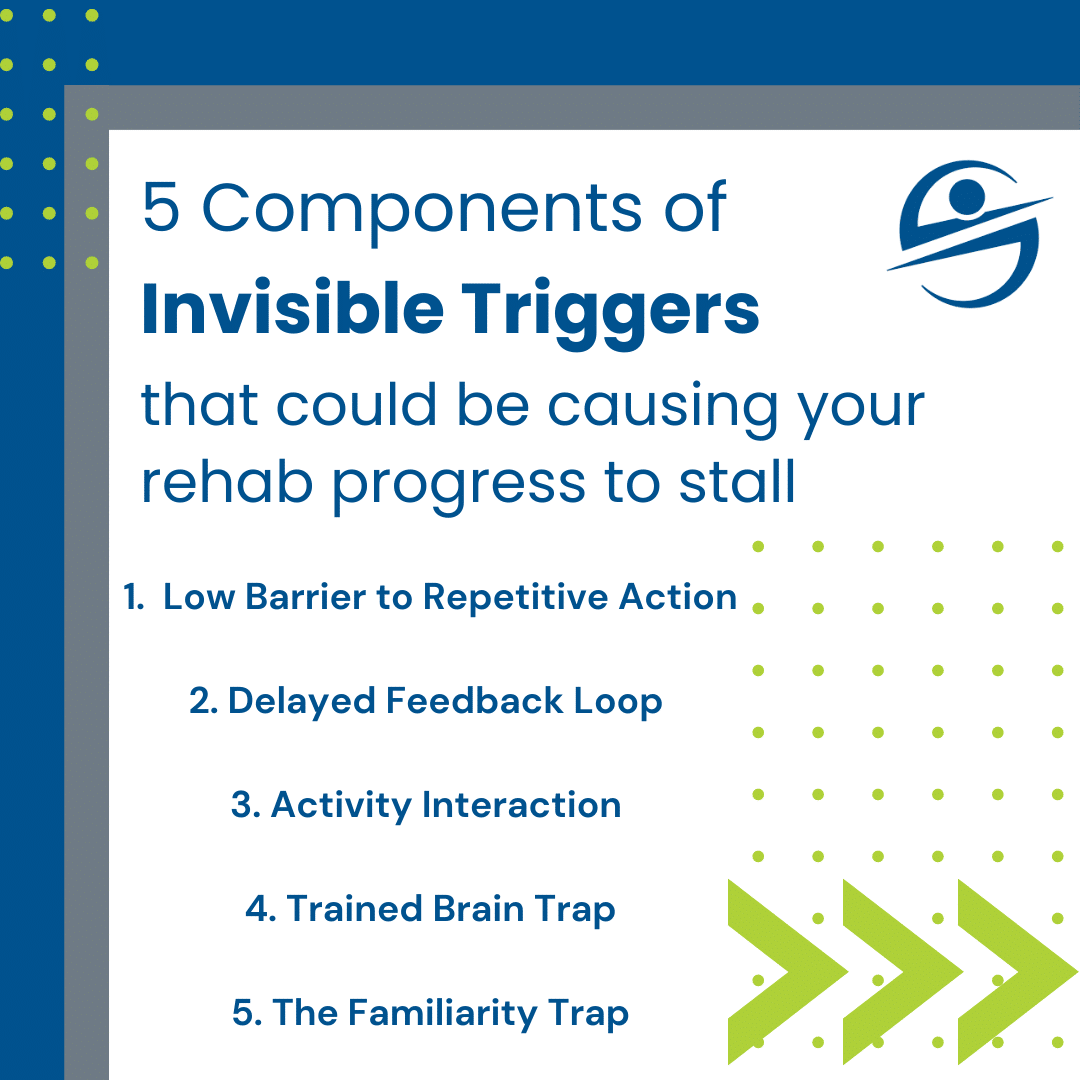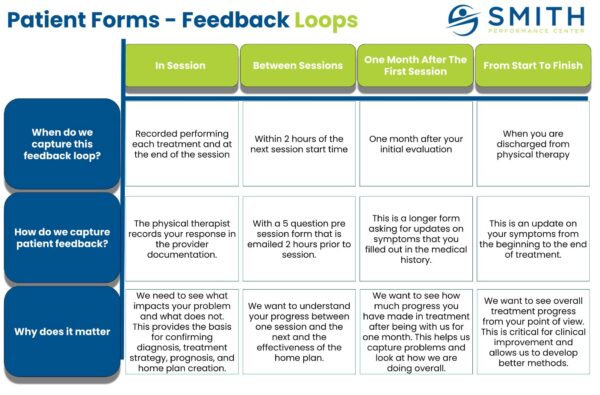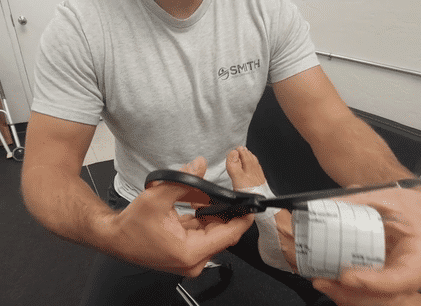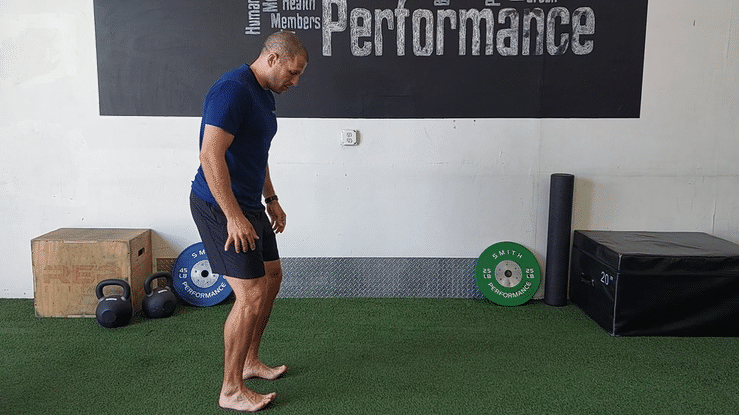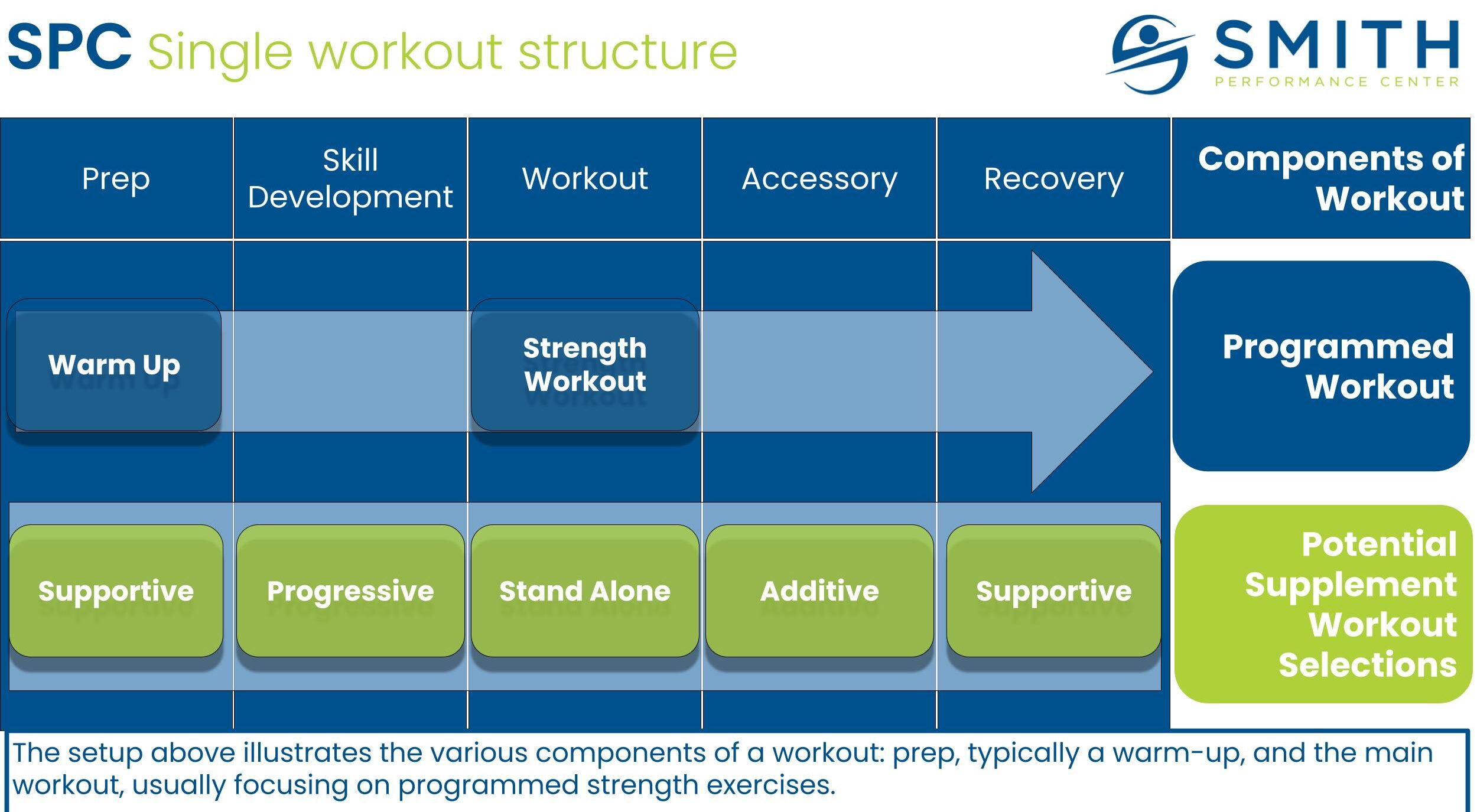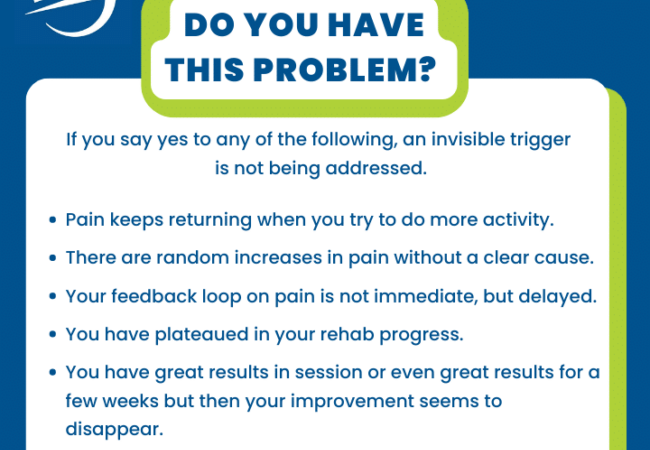
7 Tools to overcome invisible triggers stalling your rehab progress
An invisible trigger is a problem that can stop you from fully healing. An invisible trigger is an action or activity that does not seem to be causing your injury to worsen but is actually causing your injury to remain and not heal properly. During the course of treatment, our team comes across this problem frequently when a patient will seem to stop progressing in their rehab plan. This problem presents most often during the symptom stabilization and the activity progression phases. The physical therapist will see an improvement in symptoms during a session, but then progress is lost when the patient tries to manage the symptoms on their own. During activity progression, there is often an interaction between the activity being progressed and normal daily activities. Do you have this problem? If you say yes to the following, an invisible trigger is not being addressed. Pain keeps returning when

